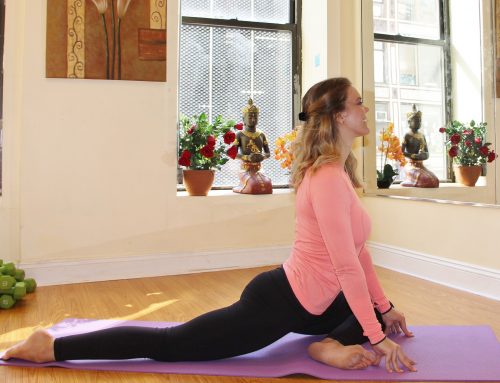By Matthew Remski
You go within, plumbing the unseen depth. You watch your breath. You motivate distinct and sublime actions within intimate musculature. You test the line in the sand between effort and surrender. You marvel at the falsity of your apparent separation from nature. Thoughts emerge, and you grapple with them, or remember to let them float by. You have some idea of freedom lodged like a splinter of diamond in your heart, and you yearn to see its gleam.
You’re practicing Yoga. It’s a private affair. Nobody can see what you’re doing. How can you share it with others? And what could this most internalized (and perhaps narcissistic, in the view of some) of spiritual practices possibly have to do with community? How can those of us who seek answers within begin to find answers within each other?
In the West, we’re finding out, and it’s an interesting journey. We seek community by affiliating with Yoga studios. We attend workshops, kirtan, and have intense sequestered retreat experiences. But often, in relationship to the broader culture and to our ‘normal’ lives, we feel adrift. How does yoga really connect us?
Our challenge is that we’ve received this tradition oddly, stripped of its nurturing context. We didn’t grow up with 100 yogis in tree pose in High Park, with ascetic hobos selling healing herbs at Nathan Philips. (Other herbs, maybe, and a lot of pills…) Our mothers didn’t prepare an extra plate for a wandering monk or nun. We didn’t see sadhus wandering around and understand that such would be our fate at one time or another – if not in our 20s, than in our 70s. (Even if we did grow up in India, such scenes are probably remote to us by now.) We didn’t aspire to our spiritual education as being part of the whole chaotic symphony of life, intermixed with housework and careerism. In other words, we haven’t learned our yoga as a part of shared cultural life, but in spite of it.
Absent such rich contexts, the modern yogic life has been a choice apart, a withdrawal to an ‘alternative’ which is positioned amongst a myriad of ‘alternatives’. It often goes hand in hand with (and perhaps further irritates) a break from family structure and mores, and it certainly accentuates the modern obsession with individualism. Some folks go on and on about “my practice” like children polishing their go-carts.
So how do we support Yoga practice today in our culture, without history, family ties, and a big-picture context? When “yogic life” is one fashionable alternative among many, what shores it up? The lowest common denominator: economic concern. Consciously or not, we wind up supporting modern yoga in the only way we know how: through the marketing of accessories, the creation of yoga brands of various aromas (the athletic, the devotional), and the selling of vacations. This is not a cynical view, but a simple fact: we have transplanted yoga from a culture that organically supported it on its own terms to one which machine-milks anything that turns a profit. We have to look at this with wide eyes, and know that our integrity depends upon swimming upstream against darkened waters.
“Only connect” wrote E.M. Forster, “the prose and poetry of this life”. Modern Western yoga demands the same: connecting the esoteric to the mundane, the internal to the external, the devotional hymn to the hurricane relief effort, the heat of discipline to the heat of civil discourse, the stilling of the mind to the stilling of guns and chainsaws, and connecting that surrender to internal light to how we love, how we parent, how we care for the ill, and how we grow our food. Such connections can only begin with context, with dialogue, and by remembering models of cultural organization far older than money and fashion – models based on world-view and experiential mystery.
Perhaps a good model would be that of a festival that emphasizes, hmm, let’s say: world-view, non-corporatism, local economy, and experiential mystery? Ha! I’m in postmodern purgatory – marketing an event that resists marketing while disparaging marketing! Strange times call for strange measures.
However they emerge, the connections we yearn for – between each other, between personal practice and world renewal – begin with community. In the future, what graces to bind us will be more than activities and interests. Marketers will begin to notice that we are less identifiable by what we purchase than how we think, or vote, or respond to conflict. Perhaps then they will have less to say, or they’ll even become bored and shut up. And when they do, there will be more quiet for meditation.
Moksha literally means “the waning of infatuation”. When the sheen fades on that yoga mat, and the hem frays on that wickable workout fabric, when the gas dries up and we can no longer buy apples from New Zealand, what will turn us on?
When all infatuations fade away, we’ll have nothing left but the azure sky, the green loam of life, and each other.






